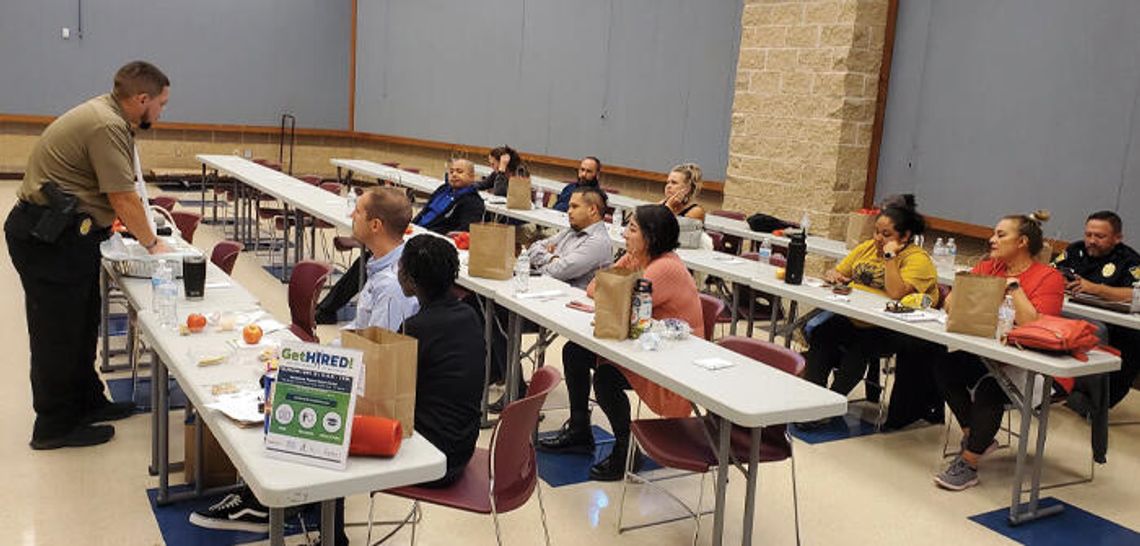By Brittany Anderson
KYLE — It’s a scary and uncomfortable reality to accept, but knowing what to do in the face of an active shooter event could very easily help save your or someone else’s life.
The Kyle Police Department is one of many agencies that utilize the CRASE (Civilian Response to Active Shooter Events) program, designed and built on the Avoid, Deny, Defend strategy developed by ALERRT (Advance Law Enforcement Rapid Response Training) in 2004.
CRASE is completely free and works to provide strategies, guidance and a proven plan for surviving an active shooter event. The course examines the history and prevalence of active shooter events and covers various civilian response options, medical issues and considerations for conducting drills.
KPD Captain Pedro Hernandez said there are five CRASE instructors within KPD, all of whom have gone through the ALERRT training course to teach the program. Businesses, hospitals, places of worship, community organizations and schools can all benefit from the training.
CRASE is structured as a four-hour program but can be tailored depending on the needs of those participating, and instructors will typically go to wherever you are to hold the training. Hernandez said that there are no hands-on or practical exercises, but instead utilizes PowerPoints and training videos.
Because these types of events start so quickly, law enforcement might not be able to be on the scene for minutes — time that is vital. The ADD strategy is to avoid the attacker and be aware of your surroundings, deny the attacker access to yourself and victims by keeping distance and creating barriers, and defend yourself so you can survive when you can’t avoid or deny.
Hernandez noted that with one upcoming training they are doing, a medical component was added to the course. Self-Aid Buddy Aid teaches people how to apply tourniquets, pack a wound, apply bandages and more. Hernandez explained that in an active shooter event, law enforcement’s first priority is to stop the killing. As such, they might not be able to tend to the wounded right away, making these kinds of skills beneficial.
While the program does not have age restrictions, Hernandez said it is ultimately up to parents to deem what they feel is appropriate for their child. PowerPoint slides aren’t too graphic, but some audio or video used might be disturbing — for example, a 911 call from the 1999 Columbine High School shooting is used.
But in this day and age, these skills and knowledge are important to have on hand, just in case, no matter your age.
“Younger kids and teens should be introduced to this type of training in how to survive,” Hernandez said, adding that the strategies taught can be applied to anyone in any place, not just active school shooter events.
If you are based in Kyle and interested in scheduling a time to take the CRASE program, contact Captain Hernandez at [email protected]. If you are based in Buda, contact Community Affairs Officer Freddy Erdman at [email protected]. For more helpful information, visit the ALERRT website at www.alerrt.org.










